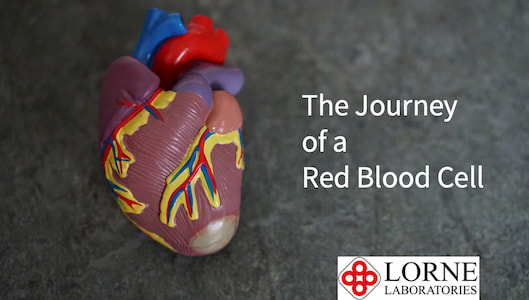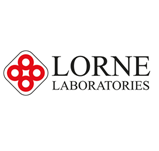The Journey of a Red Blood Cell
6 October 2017

Red Blood Cells (also known as Erythrocytes), are cellular components of blood. There are millions of them within the human body and their sole purpose is to carry oxygen from the lungs to tissues throughout the body, as well as carrying carbon dioxide to the lungs so it can be exhaled. The blood cell is characterised by a red colour due to the presence of hemoglobin, which is a protein that helps bind oxygen to the cell.
The red blood cell goes through a complex journey through the body, going from a deoxygenated blood cell to an oxygenated blood cell, and entering the heart twice. Below, we’ve laid out the journey of a red blood cell in the human body:
Step 1 - Creation of the Red Blood Cell
The journey starts with the red cell being created inside the bone. In the bone marrow, it develops in several stages starting as a hemocytoblast, then becoming an erythroblast after 2 to 5 days of development. After filling with hemoglobin it becomes a reticulocyte, which then becomes a fully matured red blood cell. This will be of a specific blood type, determined by the presence or absence of certain antibodies - learn more about blood grouping products here.
Step 2 - The Red Blood Cell's Journey begins
After creation, the red blood cell starts travelling to the heart via capillaries. The blood cell is currently deoxygenated.
Step 3 - Entering the Heart
The deoxygenated red blood cell now makes its way to the vena cava within the heart, and is then pushed into the right atrium.
The right atrium then contracts, pushing the blood cell through the tricuspid into the right ventricle.
The right ventricle then contracts, pushing the red blood cell out of the heart through the semi lunar.
Step 4 - Entering the Lungs and Oxygenation
After leaving the heart, the red blood cell travels through the pulmonary artery to the lungs. There it picks up oxygen making the deoxygenated red blood cell now an oxygenated blood cell. The blood cell then makes it way back to the heart via the pulmonary vein into the left atrium.
Step 5 - Re-entering the heart
After entering the left atrium, which then contracts and pushes the blood cell through the bicuspid, the red blood cell then enters the left ventricle.
The left ventricle then contracts, pushing the red blood cell through the semi lunar, and out of the heart into the aorta.
Step 6 - Travelling around the body
Travelling through the aorta, the red blood cell goes into the kidneys trunk and other lower limbs, delivering oxygenated blood around the body. They typically last for 120 days before they die.
And that’s the whole process! Although this seems like a lengthy process, the whole thing takes less than a minute from start to finish, depending on the individual’s heart rate.
In some cases such as illnesses or blood loss following injury or childbirth, the body may have too few red blood cells to provide the oxygen required by the body's extremities. This is where a blood transfusion becomes vital. At Lorne Laboratories all our blood grouping reagents and red cell products comply with the UK Red Book Standards to ensure safe blood transfusions.
Got questions about our products and how they impact the journey of the red blood cell? Email our team at Lorne Labs HQ and we'll be happy to assist you.
< Back to blog list
Share




